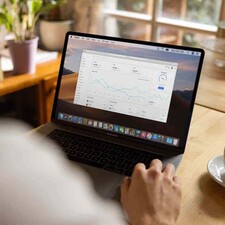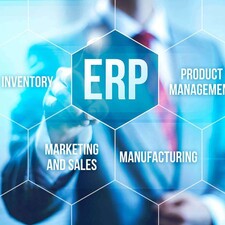Blog
The value of Business Intelligence in ERP systems

Summary
Broadly speaking, Business Intelligence (BI) can be defined as the transformation of raw data into meaningful metrics reflective upon historical, current and predictive business operations and performance.
In the past, BI-related activities were performed through manually gathering data from multiple sources, manipulating the data in spreadsheets, with an output of a mere static report. Multiply that effort by the number of different functional areas within an organization and the result is countless hours of report generation where by the time it is delivered, could very well be obsolete. Today, ERP solutions come with integrated BI modules that enable organizations to provide dynamic reporting, providing end users with exactly what they want to see, when they want to see it.
abas BI helps you analyze your data and make better decisions.
Want to know more? Check out our abas BI product page or our recent post, Business Intelligence in ERP Systems Has Never Been More Valuable
Real-time data allows for fast decision-making
One of the most visible benefits of BI software that integrates with an ERP system is its ability to give managers a real-time look at the data they need to make intelligent decisions in the short and long terms. For example, a production manager in a manufacturing environment will want to keep a close watch on the floor's scrap rate.
With a quick glance at the dashboard, he or she will be able to see the floor's scrap rate in real time, since workers will be entering that data as it occurs. Should the rate reach an unacceptable level, the production manager can halt the process and identify the root cause before too much time and material is wasted. This data can then be applied to long-term analysis to help identify trends and opportunities for process improvement.

Moving beyond traditional reporting
Another area where BI software can have a transformative effect on a business is in reporting. Modern BI software goes beyond the rudimentary reporting functions businesses used in the past by creating a more dynamic environment for users to manipulate data as needed. Traditionally, reporting was a static process - business leaders could get a snapshot of where a certain data set stood at the end of a specific day or week.
BI puts all collected data at the user's fingertips in a way that makes sense for each individual stakeholder
BI puts all of the collected data at the user's fingertips in a way that makes sense for each individual stakeholder. This allows for a real-time look at data without having to pull it out of the system, enter it into a spreadsheet and create a report. The BI module in an ERP system allows any user, whether it's a line manager or C-level executive, to quickly access a customized dashboard loaded with intuitive data visualizations on the most relevant KPIs, with an ability for ad hoc reporting.
The BI module also brings a high level of consistency to the reporting process. With traditional reporting, if a sales executive needs all of his or her regional managers to deliver a report on sales for the quarter, it's likely that each report will differ in terms of format and the source of how that data was collected. The executive must then put these pieces together, which could lead to errors and a lot of wasted time. By using BI software that is integrated with an ERP system, each manager will be working with the same data set and be able to deliver similarly formatted reports… or potentially even eliminate the need to deliver such reports, since the executive could access and summarize that data directly.
How BI cubes allow for in-depth slicing and dicing
BI software uses cubes to make ad hoc reporting easy enough for non-technical users. Cubes store raw data and give users the ability to quickly slice and dice. Users can configure their data and store it in such a way that they don't need to use SQL queries every time. In the database, all of the data entered through the ERP system is transformed and then stored in a hierarchical cube, as pictured here:

This is where the idea of "slicing and dicing" comes into play. Users can drill down into specific cube configurations, allowing them to generate useful customized reports on the exact data they need - all in real time. As the graphics above indicate, if a user wanted to see how a specific product performed in terms of revenue generated over a certain period of time, he or she can easily do so thanks to the cube hierarchy.
BI software is robust enough that users can enter data from multiple outside sources
Additionally, the BI software is robust enough that users can enter data from multiple outside sources, such as Excel spreadsheets or reports that come from machine-specific software, and associate it with the data in the ERP database. As long as the data can be seen in terms of a logical relationship, users can join data that may be otherwise difficult to cross reference in its separate forms.
When it's integrated with an ERP platform, BI gives organizations a user-centric visibility into their data that spreadsheets or siloed software systems alone could never achieve.
2018 and Beyond
With the sophistication of new BI tools and ERP's ability to consolidate all key data into one platform, ERP and BI work hand in hand to give managers the power they need to make sound, data-based decisions. According to a survey of more than 2,700 BI professionals, the most important trend in BI in 2018 is data quality and master data management – topics closely tied to ERP. "Highly appealing topics like data discovery, visualization and self-service BI are nothing without a solid foundation of data," according to the Business Application Research Center, who conducted the survey. The bottom line: today's most successful manufacturing and distribution businesses are ;built on a foundation of good data, and the path to good data starts and ends with ERP.

For more information on Business Intelligence and defining, monitoring, and leveraging ERP KPIs, download The KPI Playbook for Modern Manufacturers


